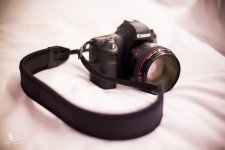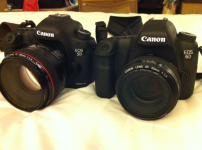A bit of a shame that they're on the 1DS3 rather than D800E's but nevertheless it's a nice comparison.
http://www.the-digital-picture.com/...meraComp=453&SampleComp=0&FLIComp=0&APIComp=0
My takeaway is that the Sigma is not quite as sharp as the Otus (though slightly less distortion and stopped down corner sharpness go in Sigma's favour, they're really minor points) and at first I was about to be disappointed... Until I swapped the Otus out for the Nikon 58, Canon 50L and the standard 1.4's in the comparison tool and it completely blows them out of the water.
TL;DR: Sigma weren't kidding when they said they were gunning for the Otus. No, it's not /quite/ there but the pair of them are so far above standard lenses in the range I'm not even sure it matters. (Though the differences comparison may be limited by the 1DS3 as the Zeiss is definitely outresolving the 1DS3 almost from the get go, and the Sigma not long after)
http://www.the-digital-picture.com/...meraComp=453&SampleComp=0&FLIComp=0&APIComp=0
My takeaway is that the Sigma is not quite as sharp as the Otus (though slightly less distortion and stopped down corner sharpness go in Sigma's favour, they're really minor points) and at first I was about to be disappointed... Until I swapped the Otus out for the Nikon 58, Canon 50L and the standard 1.4's in the comparison tool and it completely blows them out of the water.
TL;DR: Sigma weren't kidding when they said they were gunning for the Otus. No, it's not /quite/ there but the pair of them are so far above standard lenses in the range I'm not even sure it matters. (Though the differences comparison may be limited by the 1DS3 as the Zeiss is definitely outresolving the 1DS3 almost from the get go, and the Sigma not long after)






